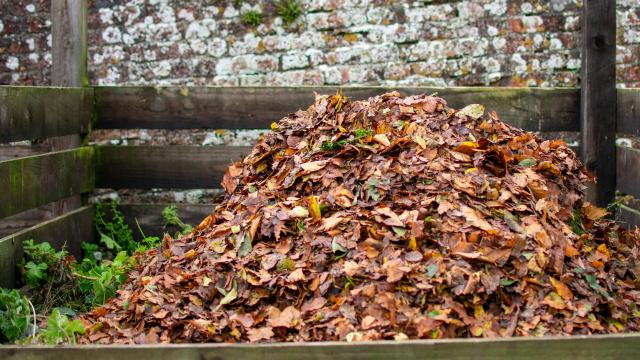Once all those pretty autumn leaves fall to your yard, they are often treated as a waste product — but these leaves are the beginning of nutrient-rich garden soil, and they make an excellent habitat for pollinators and beneficial insects. Composting your leaves instead of tossing them can save you money on removal and help you make compost you can use in next year’s garden. If you are looking to improve your soil and save on store-bought fertilisers and compost, here’s how to get started.
Why leaves are important for a garden
The first thing to remember is that leaves can be valuable habitats for native bee species, butterflies, and spiders. If you have areas with leaves that don’t need to be cleared, leaving your garden friends some leaves can help support a healthy garden ecosystem. Some gardeners prefer to rake leaves onto a tarp or drop cloth and drag the pile to an inconspicuous corner of the yard to serve as a less obtrusive habitat.
How to start composting leaves
Whatever leaf-removal option you choose, eventually they will become an obstruction to using your garden for recreation or for growing flowers and crops. This is where composting comes in. Using a leaf-shredder will make the composting process happen more quickly, and it helps with mixing because you can add in grass clippings or other organic material with less turning of your pile. That means your compost will take up less space because mulched leaves tend to pack more tightly together. But it’s not a necessary component for success.
To store your compost, a bin (or bins) or tumbler is the best way to encourage the composting process along. You can make your own version of either of these if you’re handy, but the important component to compost storage is that it creates a deep pile of organic material so that the interior moisture of the pile will be maintained. Keeping the decay process going requires a balanced level of moisture, so good drainage is also important. Make sure to stay clear of any surfaces that can stain, such as concrete, because the pile will drip onto whatever surface you put it on.
To balance the Ph of your soil, you should add nitrogen-rich organic matter because leaves on their own are fairly acidic and provide the necessary carbon element to well-balanced soil. Grass clippings, coffee grounds, vegetable scraps, green plant cuttings, and fruit are all good candidates for adding a nitrogen element to your compost. You can use a soil Ph test kit seasonally to check the Ph of your compost and make sure it’s balanced. These consist of a test strip and a colour chart. Place the test strip in the compost and allow it to soak up the moisture for a few minutes, and then compare the colour of the test strip to the chart.
How to keep your compost healthy
You should turn it (or tumble it) every two weeks. Using a pitchfork or a shovel, turn the bottom layer up and mix the top layer in. This will keep the moisture level relatively even and encourage more even levels of decay. It can also help prevent leaves from matting or forming clumps that won’t allow air to flow and will hold moisture in.
Keeping the compost moist but not drenched is important to keep the process moving along. In rainy environments, elevating the pile above the ground using a slatted base can help control moisture. You can also add some dry leaves to the pile if it becomes too wet from rain or snow. Using dry leaves or straw on top of the pile as insulation to keep your pile from freezing during the winter will keep the microbes in the bin active and can help keep things dry if there’s too much precipitation. If the climate is cold, you should also try to locate your pile to a sunnier part of the yard to keep it warm; soil microbes won’t completely die in the cold, though, so don’t worry if there’s some freezing. You’ll still get some compost, it just might take a little longer.

Leave a Reply
You must be logged in to post a comment.